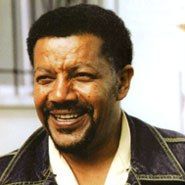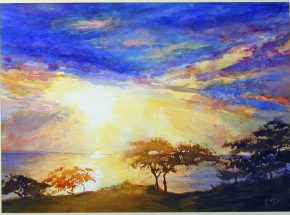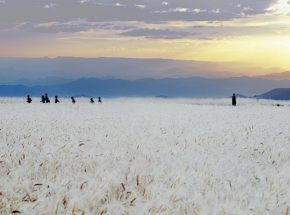

For more than thirty years, I’ve used Amharic script as the core element in my paintings. As the first Ethiopian-born American artist to use this script – one of the few ancient written systems in Africa – I’m fascinated by the visual forms of language and what they can express in contemporary art.
Applying the symbols in my paintings, I relieve words of conventional meanings and, instead, explore their aesthetic, sensual, and visual content. Disassembled and recombined, elongated, distorted, or inverted, the language characters reveal not only innovative compositional elements, but also give new perspectives on our connection to language, on how we communicate and make meaning.
We seldom “read” script as a language and are taught, rather, to identify and respond to letters as words. Working with individual letters on canvas, I get to see them as both familiar and strange: familiar – because I know literal meanings they carry when combined; yet, strange, because I “see” how the letters standing alone or in non-word combinations present unaccustomed meanings. Filled with colors or in black and white, these symbols arouse new feelings, conjure up memories, create musical sounds, and at times even seem to emit fragrances and flavors. These new ‘WordPlays’ force me to question my habits of seeing and to become more “visually fluent.”
Working in unconventional ways with language also affects my painting process. Since I don’t pre-sketch paintings and rather have only a vague outline in my mind of what a composition will become, with each painting I have to step back from the habits of mind of how I know and see the language. I “dialogue” with the symbols as they emerge, working them up with colors and layering them with wet and dried acrylic paint. The canvas becomes an “enlivened space” with texture and depth, and the language symbols often surprise me with their unexpected transformations. My painting process is an intense interplay of intention and accident, curiosity and discovery.
Website
http://www.wosene.com

